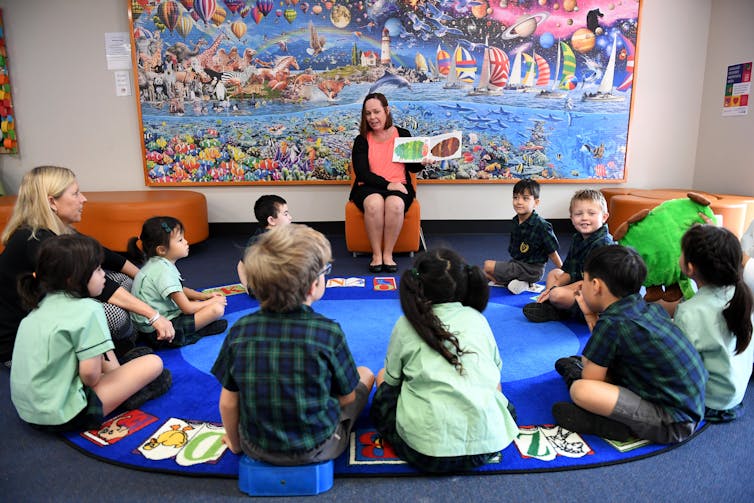Source: The Conversation (Au and NZ) – By Roderick Neilsen, Associate Professor TESOL/Languages Education, Deakin University
Burned-out teachers in Australian primary and secondary schools are quitting in droves, while the majority of surveyed teachers are thinking about it.
There are similar fears about Australia’s early childhood educators. However, there is another group of teachers to consider in the teacher shortage crisis: teachers of English as an additional language.
This group was one of the hardest-hit education sectors during the pandemic.
When former Prime Minister Scott Morrison told international students to go home if they could not support themselves, many did.
With migration to Australia on hold, there were no new school students arriving. Virtually the entire workforce of English language schools, TAFE and university language centres found itself out of work.
But even before COVID, the pool of specialist English as an additional language teachers was shrinking due to attrition, retirements and fewer training opportunities. Why is this a problem, and how do we fix it?Ignoring a key group
Australia has more than 600,000 students who are learners of English as an additional language in government and Catholic schools.
The diversity of learners includes refugees and migrants to Australia and Indigenous learners.

Dan Peled/AAP
Over the past two decades, the federal government has handed responsibility for teaching English as an additional language to the states and territories. This has seen support for English language learning either reduced or abolished. Recent Gonski funding reforms have not seen any concrete improvements.
Learners in this group have effectively been written out of education priorities and reforms. They were not even mentioned as an equity cohort in the 2019 Mparntwe (Alice Springs) education declaration.
Once heralded as a world leader in English as an additional language education – with a history dating back to the 1950s – this teaching expertise in Australia has been lost. Supports have also been lost, including targeted education programs to teach students from Indigenous, migrant and refugee backgrounds.
The borders reopen
As pandemic restrictions have lifted, international students are starting to return. At the same time, significant numbers of refugees have once again entered the community, boosting student enrolments in schools.
So, English as an additional language teaching is now back in high demand.
But schools are struggling to employ English as an additional language teachers (along with other teachers). The Victorian education department has introduced new initiatives to address the critical teacher shortage. Under these new guidelines, education students in their final year of study can be employed as part-time English as an additional language specialists, if they have completed at least one specialisation subject.
To qualify to teach English as an additional language in Australian schools, teachers must have expertise in a range of areas, including English language, second language acquisition, and teaching in different social and cultural contexts.
What needs to change
The Australian Council for TESOL (Teaching English to Speakers of Other Languages) Associations has proposed a a range of measures to improve the quality of English as an additional language education in Australia.
In its recently released roadmap, it warns Australia’s education system is failing both students and teachers. Its key proposals include:
- restoring adequate needs-based funding. At the moment, the loading for support per student fails to cover the cost of a single day’s English teaching at current teacher salary rates
- reintroducing bilingual programs to support Australia’s multilingual Indigenous student population
- upgrading curriculum resources so they provide comprehensive planning advice and best practice examples of how to support English as an additional language across the curriculum.
Significantly, the roadmap recommends that teaching English as an additional language should be compulsory in initial teaching degrees. This would mean all teachers have the skills to cater to the needs of students whose first language is not English.
This can help all students
Being able to speak, read and write English is key to success in education, employment and full participation in Australian society. While those learning English as an additional language may develop social communication skills reasonably quickly, their academic language skills may not develop enough without specific ongoing teaching.
This focus actually benefits all students. Research shows teaching that responds to individual language levels and different language needs in different subjects, improves learning for all students.
If Australia wants to reclaim its reputation as a world-class education provider, we must boost the resources, skills and commitment to teaching English as an additional language.
![]()
The authors do not work for, consult, own shares in or receive funding from any company or organization that would benefit from this article, and have disclosed no relevant affiliations beyond their academic appointment.
– ref. When we talk about the teacher shortage, don’t forget those who teach English as an additional language – https://theconversation.com/when-we-talk-about-the-teacher-shortage-dont-forget-those-who-teach-english-as-an-additional-language-185134








